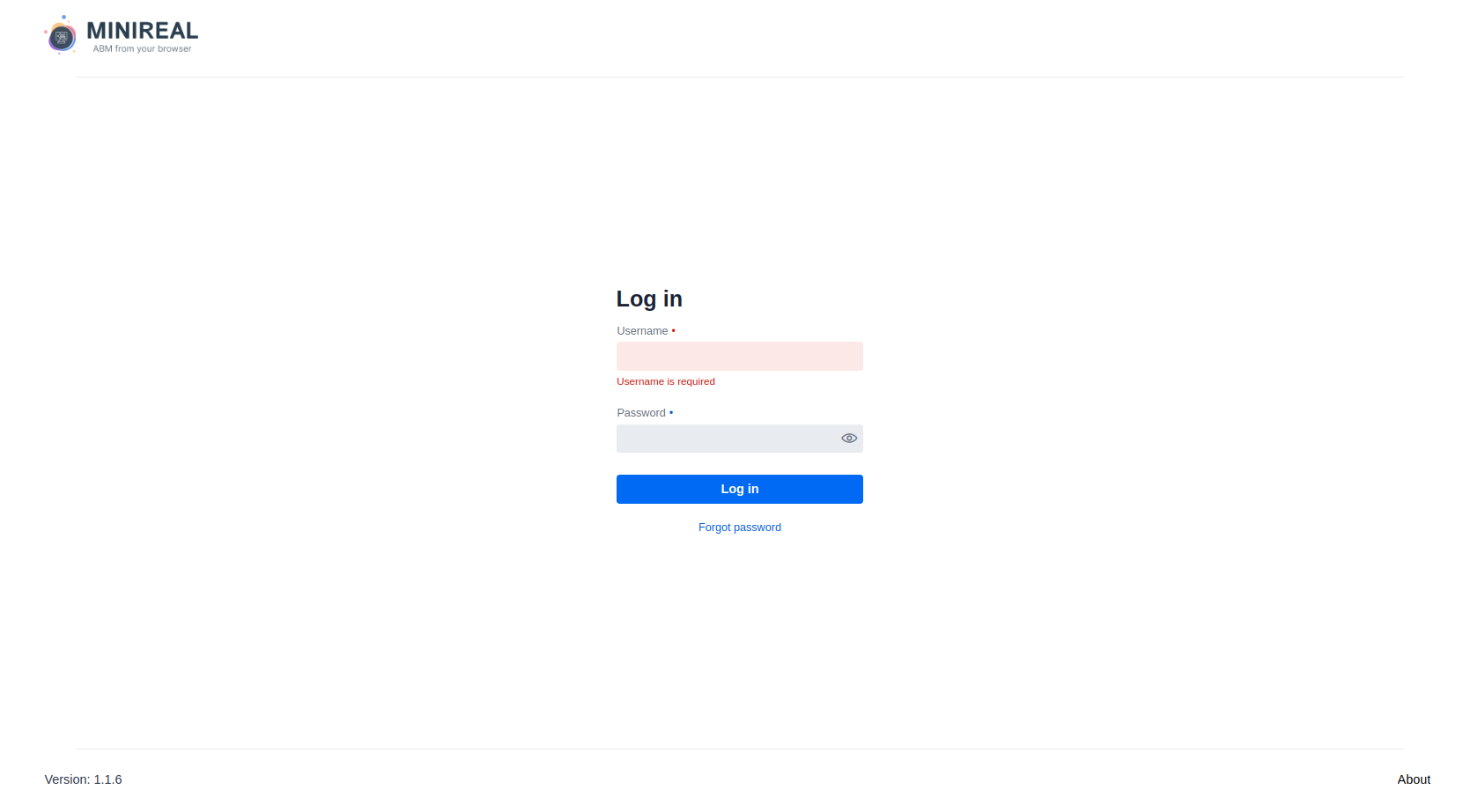Distributed Deployment
This section elaborates on how deploy the MiniReal system onto many servers in a distributed manner.
Requirements
Before getting on deploying the system two main components are needed to be installed on the server.
- Docker
- Java JDK = 17
Components
The components of the system required for the full functionality of MiniReal are:
- The MiniReal Webservice system docker image
- A PostGREs database docker image
- An Apache Kafka broker docker image
- Zookeeper service docker image to initialize Kafka broker
The order in which the components should be started is:
- PostGREs and Zookeeper container
- Kafka broker container
- Once all the above services are confirmed to run then the MiniReal container can be started.
Deploying Database service
The PostGREs database container can be deployed separately on any server that is accessible to the MiniReal Service. The Docker YAML and environment variable files should be placed in the same directory and their contents are shared below.
version: "3.3"
services:
postgres:
container_name: postgres
image: postgres
restart: unless-stopped
environment:
POSTGRES_USER: ${POSTGRES_USER}
POSTGRES_PASSWORD: ${POSTGRES_PASSWORD}
POSTGRES_MULTIPLE_DATABASES: ${POSTGRES_MULTIPLE_DATABASES}
volumes:
- ./postgre_data:/var/lib/postgresql/data
- ./init-db.sh:/docker-entrypoint-initdb.d/init-db.sh
ports:
- "5432:5432"
The following .env file needs to be placed in the same directory as the docker-compose file
in order to inject the required environment variables to the container.
Note
The only value that needs to be updated in the above .env file is the POSTGRES_PASSWORD
variable.
Additionally, the PostGREs service also requires a startup bash script be placed with the Docker
compose file inorder to initialize the required databases for the MiniReal system. The script is
named init-db.sh as shown below.
#!/bin/bash
set -e
# Create multiple databases
for db in ${POSTGRES_MULTIPLE_DATABASES//,/ }; do
psql -v ON_ERROR_STOP=1 --username "$POSTGRES_USER" --dbname "$POSTGRES_DB" <<-EOSQL
CREATE DATABASE $db;
EOSQL
done
The viewing and managing of this database is essential for smooth troubleshooting. The pgAdmin is a supplementing software used to achieve this and its documentation page has all the essential information on how to deploy it with the PostgreSQL database.
Deploying Message Broker service
The Apache Kafka Message broker also can be deployed on a separate server that can be accessed by the MiniReal system. The Zookeeper and Kafka broker services, however, should be deployed together on the same server. The Docker compose YAML and environment variable files are shared below.
version: "3.3"
services:
zookeeper:
image: confluentinc/cp-zookeeper:7.3.1
hostname: zookeeper
container_name: zookeeper
ports:
- "2181:2181"
environment:
ZOOKEEPER_CLIENT_PORT: 2181
ZOOKEEPER_TICK_TIME: 2000
broker:
image: confluentinc/cp-server:7.3.1
hostname: broker
container_name: broker
depends_on:
- zookeeper
ports:
- "9092:9092"
- "9101:9101"
environment:
KAFKA_BROKER_ID: 1
KAFKA_ZOOKEEPER_CONNECT: "zookeeper:2181"
KAFKA_LISTENER_SECURITY_PROTOCOL_MAP: PLAINTEXT:PLAINTEXT,PLAINTEXT_HOST:PLAINTEXT
KAFKA_ADVERTISED_LISTENERS: PLAINTEXT://broker:29092,PLAINTEXT_HOST://${KAFKA_ADDRESS}:9092
KAFKA_METRIC_REPORTERS: io.confluent.metrics.reporter.ConfluentMetricsReporter
KAFKA_OFFSETS_TOPIC_REPLICATION_FACTOR: 1
KAFKA_GROUP_INITIAL_REBALANCE_DELAY_MS: 0
KAFKA_CONFLUENT_LICENSE_TOPIC_REPLICATION_FACTOR: 1
KAFKA_CONFLUENT_BALANCER_TOPIC_REPLICATION_FACTOR: 1
KAFKA_TRANSACTION_STATE_LOG_MIN_ISR: 1
KAFKA_TRANSACTION_STATE_LOG_REPLICATION_FACTOR: 1
KAFKA_JMX_PORT: 9101
KAFKA_JMX_HOSTNAME: localhost
KAFKA_CONFLUENT_SCHEMA_REGISTRY_URL: http://schema-registry:8081
CONFLUENT_METRICS_REPORTER_BOOTSTRAP_SERVERS: broker:29092
CONFLUENT_METRICS_REPORTER_TOPIC_REPLICAS: 1
CONFLUENT_METRICS_ENABLE: "true"
CONFLUENT_SUPPORT_CUSTOMER_ID: "anonymous"
The following .env file also needs to be configured for the Kafka container.
The ip address or domain of the server housing the Kafka broker needs to be
assgined to the KAFKA_ADDRESS variable.
Monitoring the state of the kafka broker and its topics is very useful in troubleshooting. The Kafka Control Center is a software used to monitor kafka cluster and broker states. Its documentation page has all the essential information on how to deploy it with the broker and use it.
Deploying MiniReal service
Once the Database and Message Broker services are up and running on their respective
server, the MiniReal System can be deployed on a computer that can access both of the
aforementioned services. Here the ip or domain-name of the pre-requisite services
should be used for a proper integration with them.
The content of the Docker compose and environment variables files for the MiniReal System is shared below.
version: "3.3"
services:
minireal:
container_name: minireal
image: pazed/minireal:latest
restart: unless-stopped
environment:
KAFKA_ADDRESS: ${KAFKA_ADDRESS}
KAFKA_PORT: ${KAFKA_PORT}
POSTGRES_DB: ${POSTGRES_DB}
POSTGRES_ADDRESS: ${POSTGRES_ADDRESS}
POSTGRES_PORT: ${POSTGRES_PORT}
POSTGRES_USER: ${POSTGRES_USER}
POSTGRES_PASSWORD: ${POSTGRES_PASSWORD}
ports:
- 8090:8090
volumes:
- ./users_data:/usr/src/app/data
An .env file with the following content needs to be placed alongside the docker-compose
file specified above. The appropriate values need to be placed the enviroment variables.
POSTGRES_ADDRESS=<IP_or_domain_of_db>
POSTGRES_PORT=5432
POSTGRES_USER=root
POSTGRES_PASSWORD=<db_password>
POSTGRES_DB=minireal
KAFKA_ADDRESS=<IP_or_domain_of_broker>
KAFKA_PORT=9092
Docker containers deployment
After placing the Docker YAML and environment variable files in the same directory, run the following command to deploy the respective services.
Or in the recent Docker package this command is updated to:
Finalizing deployment
Upon successful deployment, navigate to <minireal_ip_address>:8090 to
obtain the login screen to the MiniReal system.
Following the initial deployment one user with the OWNER privilege will be created. The
credentials for this user are:
- username:
owner - password:
changemepwd
Warning
After logging in for the first time, make sure to change the password of this user.
It's advised to create another user with the role of ADMIN for the executing the
operations of system management.
